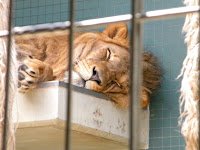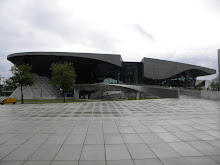For my free weekends and nights, I have wondered the streets of Berlin and road the subways outside of the area that we are in to find what else Berlin has to offer. So far I have found some interesting things.

Random soccer (fussbol) fields located every couple of street corners in the smaller areas around Berlin for kids and adults to play.

We got dragged into a friendly game against some locals. It was awesome.

Water fountains do exist in Germany after all. You have to pump the lever and cold, clear water comes pouring out, and whatever falls on the ground ends up becoming a bird bath.

A sweet grocery store. They recycled the facade of an old building and made it into a local corner market.

Not sure what it is, but I like it non-the-less.


Reminiscence of the De Stijl movement. The first because of different planes cutting through each other and moving past one another. The second because of the blue and yellow colors used which were very popular with that style of architecture.





The original Hofbrauhaus! Located in Munchen (Munich), this restaurant/bier hall is one of the reasons I wanted to come on this trip. Word to the wise, the dunkle is the best, but don't drink too much.
 The Berlin Zoological Garden is the oldest zoo in Germany. It was opened in 1844 and houses almost 1500 different species and 16000 animals. The zoo spreads across 86 acres and has an aquarium, which house 9000 sea creatures and reptiles within its three stories.
The Berlin Zoological Garden is the oldest zoo in Germany. It was opened in 1844 and houses almost 1500 different species and 16000 animals. The zoo spreads across 86 acres and has an aquarium, which house 9000 sea creatures and reptiles within its three stories.


 It is considered to be the most visited zoo in Europe. It was reported that 3 million visitors came to the zoo in 2009.
It is considered to be the most visited zoo in Europe. It was reported that 3 million visitors came to the zoo in 2009.





















































